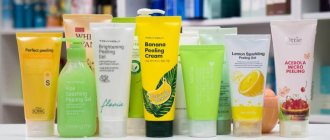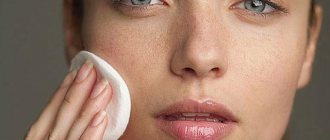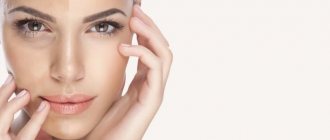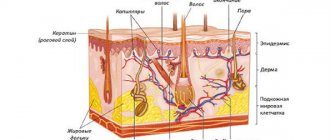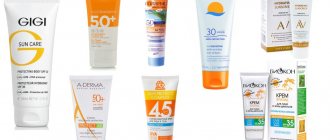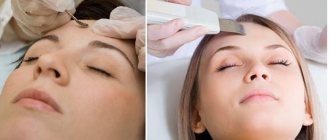Milk peeling allows you to remove the stratum corneum of the skin, which consists of 95% dead tissue. The cosmetic procedure triggers cellular renewal of the epidermis and increases the tone of subcutaneous fat. It has a firming, light anti-aging effect.
Thanks to regular procedures, you can eliminate acne, increase skin microcirculation, and get rid of small expression wrinkles. It is enough to peel once a year. The course of treatment consists of 3, maximum 8 procedures, between which a gap of 2 weeks is maintained.
Milk peeling (what is it)
In the reviews, many women who have tried this procedure note that with the help of milk facial peeling you can achieve amazing results. But for this you need to follow the entire sequence of actions and treat your skin with care after the session. What is milk peeling for the face?
This is the name given to the procedure, which is aimed at removing the upper, keratinized layer of skin cells.
In general, peelings can be mechanical (when the layer is actually “scraped off”), chemical (essentially a controlled burn), or physical (cells are removed with a laser or other device). Milk peeling is a variant of chemical peeling.
Before using products with lactic acid, you need to consult a cosmetologist to understand what effect to expect from the procedure.
For young girls or women of advanced age, procedures with different effects are required.
After removing the top layer, the skin is renewed, small wrinkles are smoothed out, acne does not form for a long time, and pigmentation is evened out.
Care products with lactic acid
To take care of your own skin every day, use simple toner recipes.
Squeeze out the juice from sauerkraut and rub it on your skin. It contains lactic acid and is the best way to moisturize and improve skin health at home.
Let the milk sour and wipe the dermis with it. Daily use before bed will give amazing results.
Indications and contraindications
The choice of any cosmetic procedure should be approached from the point of view of feasibility and the ratio of potential harm and benefit.
If you look at the photo before and after using lactic acid peeling, you will better see the problems that the product fights. Let's take a closer look at them.
INDICATIONS
- The presence of small wrinkles;
- Dry, tired skin;
- Acne and its consequences;
- The presence of unevenness, small scars and fresh stretch marks;
- Enlarged pores;
- Freckles and age spots;
- The complexion that needs to be “whitened.”
In addition, peeling with lactic acid at home or in a beauty salon can become a preparatory procedure for other more complex manipulations.
This procedure will help eliminate pigmentation, acne, and improve the treatment of rosacea.
MD Arnold Oppenheim
Although the procedure is quite safe, it still has contraindications.
CONTRAINDICATIONS
- Fresh cuts and wounds;
- Recent hair removal procedure;
- Oncological diseases;
- The presence of an inflammatory process;
- Herpes;
- Pregnancy and breastfeeding;
- Recent tan;
- Diabetes.
- Intolerance to the components of the drug.
Before buying facial peeling with lactic acid for home use, you should consult with a cosmetologist who deals with this procedure.
He will suggest a safe and effective remedy, and also advise on the possibility of use in a particular case.
Contraindications
Milk peeling is contraindicated if there are one or more restrictions from the list:
- exacerbation of herpes;
- taking antibiotics;
- rosacea;
- diabetes;
- pregnancy;
- lactation period;
- period of skin recovery after hair removal;
- oncology;
- high body temperature;
- open wounds and violation of the integrity of the skin;
- fresh tan;
- skin inflammation;
- infectious diseases;
- individual intolerance;
- cardiovascular diseases in the acute phase.
How the procedure is carried out in the salon (7 stages)
The process of removing dead skin using lactic acid is carried out in several stages:
- Makeup is removed and the skin is cleansed with lotion.
- The skin is disinfected.
- The composition itself is applied to exfoliate epidermal cells. Then you should wait from 5 to 20 minutes.
- A neutralizing composition is applied to the product.
- The resulting mixture is washed off with cool water.
- After drying the skin, moisturizing masks and creams are applied.
- The procedure can be repeated after 2 weeks.
The total number of sessions is usually from four to eight, but other options are possible.
They are best carried out during the cold season. Excessive sun activity can have a negative effect on the skin and cause pigmentation.
If you are prone to herpes, then a week before peeling you need to take antiviral drugs; this nuance should be discussed with your doctor in advance.
What is this in cosmetology?
Milk peeling is a gentle cosmetic procedure performed to exfoliate the stratum corneum and cleanse the skin. The technique does not injure the epithelium, therefore it is used in people with highly sensitive skin. This is a type of chemical peeling that gives a superficial effect.
When aggressive agents with a high concentration of the active substance and a low pH level are used during the procedure, the therapeutic effect reaches the deep layers of the dermis. In this case, a medium peeling is obtained.
In most cases, the procedure is performed on young people under 25 years of age . It is possible to use milk peeling after 35 years as part of a complex treatment of dermatological problems. The technology allows you to well moisturize the skin of the face, normalizes the water-electrolyte balance in the dermis and stabilizes the microcirculation process.
Component characteristics and properties
The procedure is carried out using lactic acid, which is formed during the breakdown of glucose. This is a natural product that does not cause severe irritation or damage to epithelial cells. The organic compound is involved in carbohydrate metabolism and is one of the main factors in natural skin hydration. An alternative name for the active substance is lactanoic acid.
The natural ingredient can be found in sour milk, fermented alcohol or sauerkraut. For the manufacture of cosmetics, the active ingredient is obtained through an enzymatic reaction.
During industrial production, glucose is fermented with the participation of lactic acid bacteria. The molecules of the resulting lactic acid are small in size, due to which they easily pass through the membrane of epithelial cells and have a uniform effect on the skin of the face.
After penetration into the superficial and deep layers of the dermis, the active substance produces the following effect:
- provokes cellular tissue renewal;
- increases the speed of microcirculation;
- participates in the production of glycosaminoglycans;
- improves the lipid barrier, which performs a protective function, stimulates the formation of ceramides;
- increases skin hydration;
- accelerates the synthesis of collagen and elastin fibers.
We recommend: All about the benefits and harms of facial peeling. Who should perform the procedure and when?
Indications and contraindications for use
There are the following indications for milk peeling:
- dehydration of the skin, disruption of water-salt metabolism in the cells of the epidermis, which manifests itself in the form of dryness and flaking;
- development of mild acne;
- hyperkeratosis, in which there is an increase in the stratum corneum of the skin, the appearance of irregularities;
- pore expansion;
- dullness of the skin;
- the appearance of stretch marks or stretch marks;
- small expression wrinkles;
- development of premature age-related changes due to excessive exposure to ultraviolet radiation;
- disruption of the sebaceous glands;
- hyperpigmentation;
- increased skin sensitivity, high risk of developing an allergic reaction;
- low skin tone, the appearance of sagging areas in the cheeks and chin.
Milk peeling can be used during the preparatory stage before a complex cosmetic procedure involving deep professional cleansing of the skin. Lactanoic acid is used as an additional therapy in anti-aging techniques.
The procedure is not performed in the following pathological conditions:
- acute inflammation of the skin;
- individual intolerance to structural components;
- violation of the integrity of the epidermis;
- exacerbation of herpes;
- less than a week has passed since hair removal;
- tanning by artificial and natural means;
- taking antibacterial medications and retinoids that increase the photosensitivity of the epidermis;
- dermatological diseases: acne breakouts, eczema, psoriasis;
- the presence of malignant neoplasms;
- diabetes;
- rosacea;
- infectious and inflammatory diseases of a systemic nature;
- telangiectasia.
Lactanic acid is not recommended for use by pregnant and lactating women.
What to do after the update session (4 rules)?
After the session, the skin requires special protection and careful handling during the recovery period:
- You should not scratch your skin for several days after the cleansing session;
- decorative cosmetics should be used no earlier than after a few days;
- It is better not to use strong cleansers for 4-5 days;
- You should not sunbathe, and when going outside, even in winter, you need to use sunscreen for a week after the session.
After the procedure itself, slight redness will be observed. It may not disappear for a couple of days.
In the future, you should be prepared for peeling, which lasts about a week. Please be patient until the formed crust comes off on its own. Don't touch her again! Don't rip it off!
Peeling indicates that cell renewal processes have started.
Plastic surgeon Asif Pirani
After peeling, you should expect not only peeling, but also a burning sensation.
It would be better if the woman did not apply cosmetics to her skin during the recovery period.
Stages of the recovery period
Post-peeling skin care begins immediately after the procedure. It lasts for 7 days: sunscreen with a protection factor of at least 30 SPF, moisturizing and nourishing cream are applied daily. During this period, the following rules must be observed:
- It is forbidden to comb the skin to which lactic acid has been applied;
- try not to touch the vulnerable area;
- Do not use detergents or cosmetics within 24 hours after the end of the procedure;
- Chemical and physical hair removal is not performed on the treated area;
- You will need to avoid exposure to direct UV and sunlight on the skin.
The results obtained are maintained for a year. For any serious complications, it is recommended to consult a dermatologist to reduce the risk of severe damage to the skin.
What result should you expect?
If the procedure promises a stunning result, then, probably, many women are ready to endure both peeling and crusting. But do the price, side effects, and milk peeling justify it?
In this case, most cosmetologists will recommend this procedure. Since just a couple of sessions lead to such changes:
- wrinkles are reduced;
- skin tone improves;
- freckles and pigmentation lighten;
- Acne marks become less noticeable, sebum production decreases;
- dryness disappears, the skin stops itching.
The condition of the skin improves significantly after peeling. The problem of oily shine on the face disappears.
Plastic surgeon Brian Harmych
Photos before and after procedures
Photos after milk peeling will help you evaluate the effectiveness of the cosmetic procedure. As you can see, lactate exfoliation does have a nice visual effect. Wrinkles are smoothed out, pigmentation and acne marks become less pronounced, oily shine is eliminated, the face becomes fresh, the skin becomes moisturized and denser.
Question answer
This problem is best dealt with by TCA peeling.
In addition, it is recommended to pay attention to laser resurfacing or other hardware techniques. With such skin, you risk encountering age spots. It is better to contact a cosmetologist who will select a more suitable option, taking into account the phototype.
To begin with, you should wait for the complete restoration of the skin and the completion of the rehabilitation period. Only then can you go for contour plastic surgery.
Start using lactic acid
The properties of lactic acid have been known for a long time, but it was isolated as a pure cosmetic product only in 1780. In subsequent years, it was actively studied, thanks to which a beneficial effect on the skin and the body was discovered.
The beneficial properties are good because the product is a related element at the biological level (it is based on the water-lipid membrane of the skin).
It began to be introduced into food and pharmaceutical products. It is included in baby food, meat, beer, livestock feed, and cosmetic products. When people start talking about AHA acids, they often remember its analogues: salicylic, glycolic, mandelic. Few people remember that the milk analogue is the standard by which other fruit acids are oriented.
How to exfoliate yourself
At home, it is quite possible to conduct a session of removing dead particles of the epidermis. You can make your own milk peeling composition using proven recipes, or you can resort to industrial compositions.
When purchasing a product, carefully read the instructions for use and the composition of the product: not all components are suitable for every type of epidermis.
Regardless of whether you chose milk peeling spa technology from Tian De , or Aravia professional peeling with lactic acid lactica exfoliate , or any other product, you should take care of thoroughly cleansing the skin, applying a high-quality neutralizing composition, and a moisturizing mask.
It is most convenient to use drugs from the same manufacturers as the main product.
If you are not sure of the correctness of actions, then first you can try a more delicate product, for example, peeling Milk Mousse PREMIUM Professional from a Russian manufacturer with lactic acid.
It acts more gently than conventional products, the effect is less noticeable, but you don’t have to worry about unwanted consequences if used incorrectly.
Before the procedure, be sure to cleanse your face first with lotion and then with alcohol or an alcohol-containing liquid.
The composition itself is applied first to the forehead, then to the temples, chin, the rest of the face, and neck. It is convenient to distribute the mixture with either a cotton pad or a makeup brush.
Then you should wait the time specified in the instructions. For example, the manufacturer recommends applying Aravia peeling with lactic acid for 2 – 10 minutes.
A slight burning sensation during the procedure is normal, but if it becomes unbearable, the session must be stopped immediately to avoid burns.
Despite the fact that some manufacturers write “professional use” on the packaging (as, for example, it is indicated on the packaging of the peeling product with 10% lactic acid lactica exfoliate from Arabia), it is suitable for home use, although it requires more care when working.
Homemade recipes for peeling compositions
If you want to experiment and feel like a real chemist, you can prepare a composition for peeling with lactic acid yourself.
Even if you are completely confident in the correctness of the prepared composition, be sure to test it on the skin of your hand, for example, in the wrist area.
The pharmacy chain sells formulations containing 80% lactic acid. This concentration is unacceptable for use at home.
To prepare the peeling mixture, you need to add water. Depending on the sensitivity of the facial skin, a 10-20% solution is used.
It is convenient to use a syringe for preparation. 1 ml. acid and 7 ml. water will give a 10% solution, to obtain 20% - 2 ml of acid and 6 ml. water.
Mix the resulting composition thoroughly. If you use it only for the face, it will be enough for about two procedures.
Apply the resulting solution to thoroughly degreased skin. For the first procedure, limit the time to one minute or less. You can wash off the homemade peeling with ordinary cool water.
Slight redness and burning are a normal skin reaction. After the procedure, you can apply a moisturizing, soothing cream, or make a mask with aloe. In the future, the duration can be increased.
If there are children in the house, make sure that neither the prepared composition nor the concentrated acid becomes the subject of children's games.
Chemical burns, although they can be treated, the degree of cure depends on many parameters and is not always 100%.
To rejuvenate the skin of the heels, acid with a concentration of 25-60% is used. If the skin is very rough, a more concentrated solution can be used.
For the first time, you should start with a 20% solution. In subsequent procedures, the feet can be wrapped in polyethylene after applying the acid. After rinsing, be sure to use a rich cream.
Types of glycolic peeling, indications for use
Depending on the concentration of the active substance, glycolic peeling can be of three types:
- surface,
- median,
- deep.
When deciding to rejuvenate using glycolic peeling, you should always start with the lowest concentration of preparations, cleaning the very top layer of the skin. Superficial peeling using a drug of 12-20% concentration will be enough to solve skin problems such as freckles, fine wrinkles, persistent acne, and increased oily skin. In addition, a superficial peel helps prepare the skin for deeper treatments if needed.
With glycolic peeling of any depth, burns on the skin are inevitable.
With medium peeling, the epidermis dissolves almost completely, and the acid penetrates into living cells. The procedure is carried out using the drug in a concentration of up to 50% only in a clinical setting, and subsequent rehabilitation may take more than two weeks. A prerequisite for obtaining the desired result from such a procedure is strict compliance with all instructions of the specialist who performed the peeling. Indications for medium peeling are deep wrinkles, scars and scars, including acne.
Deep peeling with a 70% drug is carried out only in a hospital setting and is considered essentially a surgical procedure. Since the top layer of skin is completely destroyed, the procedure will be painful and is performed using anesthesia. And the result during the rehabilitation period will be generally similar to how the skin recovers after a severe sunburn, i.e. with significant erythema, peeling and even peeling of the burned layer of skin. This procedure triggers collagenosis in the deep layers of the skin, thus completely renewing the epidermis. This technique is indicated for multiple deep wrinkles, deep scars, severe skin unevenness, and significant pigmentation disorders.
TOP 5 best products for milk peeling
There is more than one option for milk peeling, but some are still more popular. Below is the TOP 5:
- Milk peeling Compliment has quite contradictory reviews from users. On the one hand, it is quite effective for dry skin, but on the other hand, it can cause severe irritation.
- Facial peeling with lactic acid Aravia (Arabia) from a Russian manufacturer - has collected a lot of positive user reviews. Quite an effective product, especially for oily skin. Use with caution at a young age.
- Milk peeling Tian De (tiande) spa technology , according to reviews from women who have used it, is a relatively budget option that can be bought for home use. Quite gently exfoliates dead skin; in addition to the face, it is used to renew the skin of the hands, elbows, and décolleté. But the parabens included in its composition cause concern among some buyers.
- Belarusian peeling from the manufacturer Belita-Vitex PROFESSIONAL FACE CARE. Also a budget option for home use. It is not as active as its Western counterparts, but it is effective. The disadvantages of this product include a rather strong smell.
- Sesderma facial peeling from a Spanish manufacturer is not so actively used by Russian consumers, but it deserves attention. Well suited for young skin whose main problem is rashes.
This list is not exhaustive. In addition, you should always remember about individual intolerance, so before the first use you need to test the composition on a small area of skin on your hand.
Lactic acid perfectly moisturizes the skin.
Plastic surgeon Brian Harmych
Session in the salon and at home (pros and cons)
The cosmetology industry offers a lot of procedures, including milk peeling for the face, which are carried out in the salon.
Let's take a closer look at the pros and cons of conducting a session in a beauty salon/cosmetology salon or at home.
| Criterion | Cosmetology salon | Home procedure |
| Price | The price is quite high, it includes, in addition to the cost of the drug and the work of the cosmetologist, the overhead costs of the office | Limited by the price of the drug and related products (lotion, cotton pads, etc.) |
| Safety | Responsibility for the quality of peeling lies with the cosmetologist; if undesirable consequences occur, you can receive compensation | All risks are assumed by the patient himself. |
| Comfort | The client performs virtually no active actions and can completely relax | The procedure is performed independently, the performer must carefully monitor so as not to harm the skin |
Either option has its positive and negative sides. If you decide to perform the procedure in a cosmetology salon, then it is worth studying reviews of different salons that perform milk peeling. The fact is that the final result depends on the doctor’s qualifications.
It is better to look for reviews among friends, since anonymous comments on the Internet can be custom-made.
Cleaning method with lactic acid
For a solution of 4% concentration you will need the following ingredients:
- lactic acid 1 g;
- distilled water 19 gr.
You need to observe these proportions so as not to harm your skin, especially when using it for the first time.
Acid to water ratio for peeling solution:
| 4% | 15.2 gr. water | 0.8 gr. acids |
| 10% | 14 gr. water | 2 gr. acids |
| 20% | 12 gr. water | 4 gr. acids |
For the final stage of cleaning, you need to prepare a neutralizing solution : half a glass of distilled water, 0.5 tsp. soda
The entire procedure can be divided into a series of stages:
- Preparatory. About 2 weeks before the procedure, it is better to avoid sunbathing and regularly protect the epidermis with Sanskrins.
Antiviral prophylaxis can be carried out to avoid complications after the procedure.
You may want to prepare your skin for your next cleanse by adding products low in lactic or fruit acids to your evening routine.
- Cleaning. Use any convenient means to remove makeup, but remember that cleaning must be of high quality.
It is advisable to wash your face with a water-based cleanser - foam or gel.
- Tonic. Before applying the peeling solution, the skin must be degreased.
This can be done either with a tonic based on low acids, or with an alcohol-containing product, for example, calendula tincture.
- Check. As before any cosmetic intervention, a sensitivity test must be performed before peeling.
To do this, apply a low-percentage peeling solution to your wrist or elbow, wait a few minutes and watch the reaction.
If manifestations occur in the form of unbearable itching or burning, then the solution should be washed off with lukewarm water and peeling cleaning should be abandoned.
- Peeling. You can apply the cleansing solution using any means convenient for you - a brush, a cotton swab, or a cotton pad.
The duration of exposure of the solution to the top layer depends on the drug, but for the first time it is better to limit it to two minutes.
- Neutralizing . Apply a layer of neutralizer over the peeling layer and rinse with cool or cold water. Do not use hot water, this may increase the chemical effect.
- Moisturizing. Soothe the skin with a cooling and moisturizing agent; an alginate mask is suitable for this.
After a soothing session, the face should be well moisturized with cream.
The cosmetologist talks about the procedure:
Expert opinion
- Cosmetologist
- Surgeon
Irina Dorofeeva
practicing cosmetologist
This procedure is aimed at eliminating dead cells and provokes exfoliation of the epidermis. As a result, a renewal and rejuvenating effect is observed. Peeling improves the production of your own collagen, adds firmness and elasticity.
Sanas Kharirchyan
plastic surgeon
With the help of milk peeling you can even out your complexion, texture, and reduce wrinkles. This procedure is especially often used to eliminate age spots. In addition, peeling improves skin tone. But I would not recommend experimenting with homemade acid compositions, as you can harm yourself.
Reviews
VERONIKA, 29 YEARS OLD:
“I often encounter redness near my nose.
It's hard to hide them even with makeup. Milk peeling has become a real helper for me. After it there was no itching, no irritation. I'm happy with the result."
MASHA, 27 YEARS OLD:
“I wanted to remove freckles with this peeling.
I probably expected too much from the procedure. The freckles didn't even lighten at all. I’ve tried lightening creams before, but they were more helpful.”
